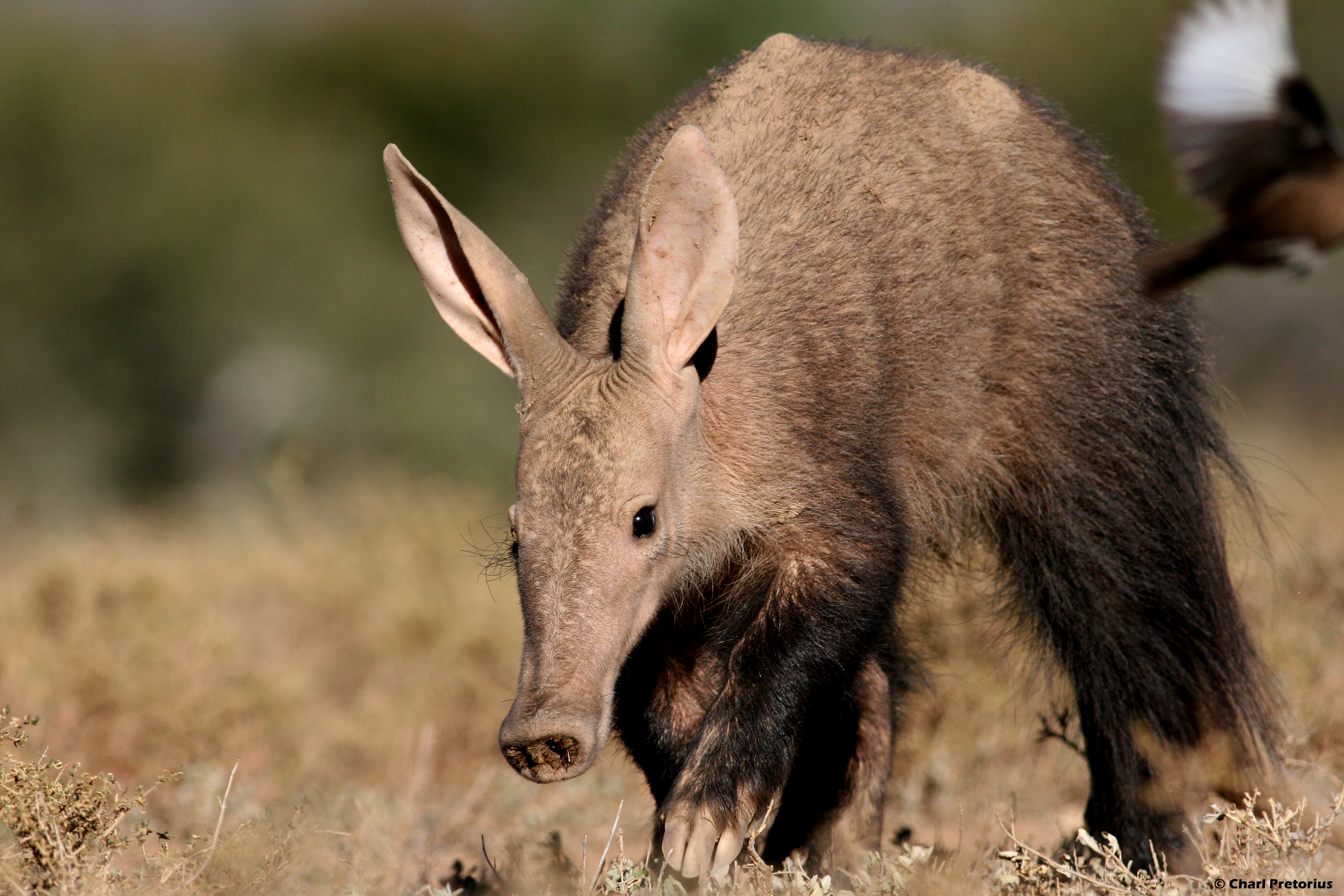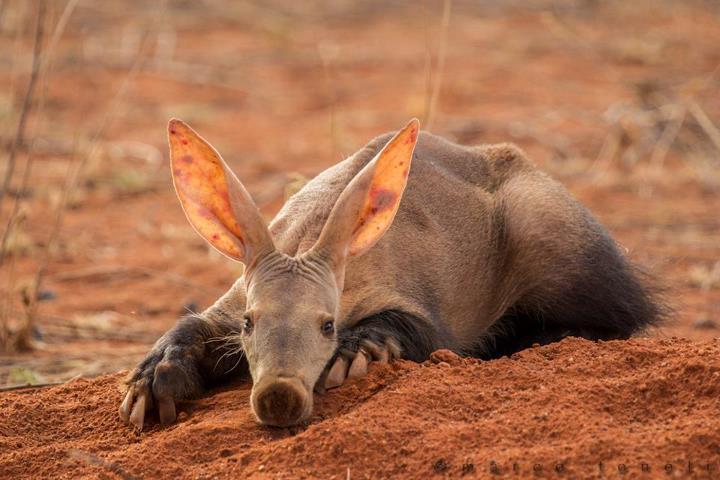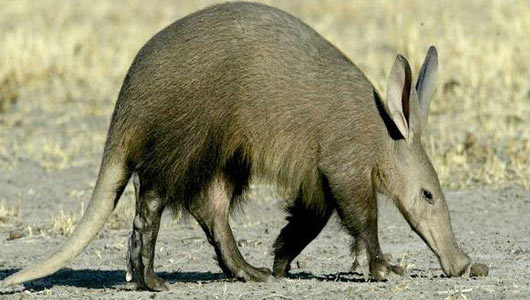
The aardvark differs from the anteater, sloth, armadillo, and all other mammals. It is the only member of the order Tubulidentata (tubule toothed), so named because of a permanent set of twenty teeth that have tubular pulp cavities extending through them from top to bottom. The teeth are rootless. Dutch farmers who first encountered the animal in South Africa called it an aardvark, which means "earth pig" in the Dutch language. It is also sometimes called the African ant bear. It looks like a giant, hump-backed rat with the head of an anteater, the nose of a pig, and the ears of a rabbit. It is unrelated, however, to any other mammal.
Physical Characteristics of Aardvarks
The typical aardvark is about 7.5 feet long and weighs between 110 and 150 pounds, though the largest may weigh up to 180 pounds. It has a long, ratlike tail and a foot-long, sticky tongue that usually hangs out of its mouth. The tongue is curled like a coiled spring and is unleashed quickly as the aardvark sucks in its meal of ants or termites. It is perfectly suited for inserting into nests, and the termites adhere to the sticky surface. Adult aardvark have one- to two-inch-long whitish hairs growing fromeach nostril, and twenty teeth along the sides of the mouth, that are always growing. The nose hairs protect aardvark from dust and dirt while they are digging.Young aardvark have front teeth that fall out as the animals reach maturity. Aardvark teeth are unique in the animal kingdom, as they are rootless, lack dentine, and have hollow tubes running through them. Thick brown hair covers aardvark' pinkishgray skin. The hair serves to protect members of the species from insect bites. They have short, stocky legs and small feet with long, straight, very strong, blunt claws. Their front feet have four toes, while rear feet have five toes. The rear toes are webbed at the bottom. An aardvark looks like no other animal on earth.
The Life Cycle of Aardvarks
During most of the day, aardvark live in burrows in the ground. They live singly or in small groups. They usually come out only at night, when they begin searching for termites and ants, which are the major part of their diets. They can rip open ant and termite nests and quickly lap up the insects with their sticky tongues. Aardvarks have tremendous ability to dig burrows in the ground very quickly. One aardvark can dig much faster than several human beings armed with shovels. Their powerful front claws can tear through hard ground and mud-covered termite nests with very little difficulty. They dig like dogs, pushing dirt and mud backward under their bodies. They have a very good sense of hearing but very poor eyesight. When frightened, they usually run as quickly as possible for their burrows, but as they run, they frequently crash into trees and bushes. Sometimes they fight by using their powerful tails to hit their attackers, or by standing up on their back legs and slashing an opponent- usually a lion or a leopard-with their claws. Aardvark mothers usually give birth to only one or two offspring a year, usually in May, June, or July. They nurse their young in their burrows and spend most of the day with them, curled up in a tight circle. Aardvarks are able to dig their own burrows by time they are six months of age. Aardvarks were formerly classified with anteaters, sloths, and armadillos in the order Edentata, but this is no longer the case. The order under which they are now classified, Tubulidentata, is at least sixty million years old, though its origins are unknown. Evidence of fossil remains indicates that the aardvark ranged over Europe and Asia until about five million years ago. At that time, a close relative lived on the island of Madagascar. Today there is only one order, one family (Orycteropodidae), one genus (Orycteropus), and, remarkably, only one species (afer), and it is exclusively African. It exists in relatively small numbers and does not respond well to captivity, but has survived in zoos for ten years.
Aardvarks and Humans
The chief importance of aardvark is their keeping in check enormous, ever-multiplying hordes of termites. Some African peoples hunt aardvark for food and claim the meat is very tasty. Aardvark burrows are large enough for a small-sized man to crawl into, but the hunter must kill the animal before it has time to escape by burrowing deeper. The animal can dig faster than the man and can throw up a wall of packed dirt between itself and the hunter-and then it is gone. Some African peoples believe that a bracelet of aardvark teeth can protect an individual against evil forces.
Aardvark Facts
Classification:
Kingdom: Animalia
Subkingdom: Eumetazoa
Phylum: Craniata
Subphylum: Vertebrate
Class: Mammalia
Subclass: Theria
Order: Tubulidentata (tubule-toothed)
Family: Orycteropodidae (ant bear)
Genus and species: Orycteropus afer
Geographical location: Africa, from Egypt to the Cape of Good Hope
Habitat: Open woodland, scrub, brushland
Gestational period: Seven months
Life span: Eight to ten years
Special anatomy: Chisel-shaped claws to break open hard clay of termite nests; a sticky tongue; twenty teeth that grow continually throughout its lifetime
Other popular Animals
Photo Gallery of - Aardvark








 Animalia Life
Animalia Life